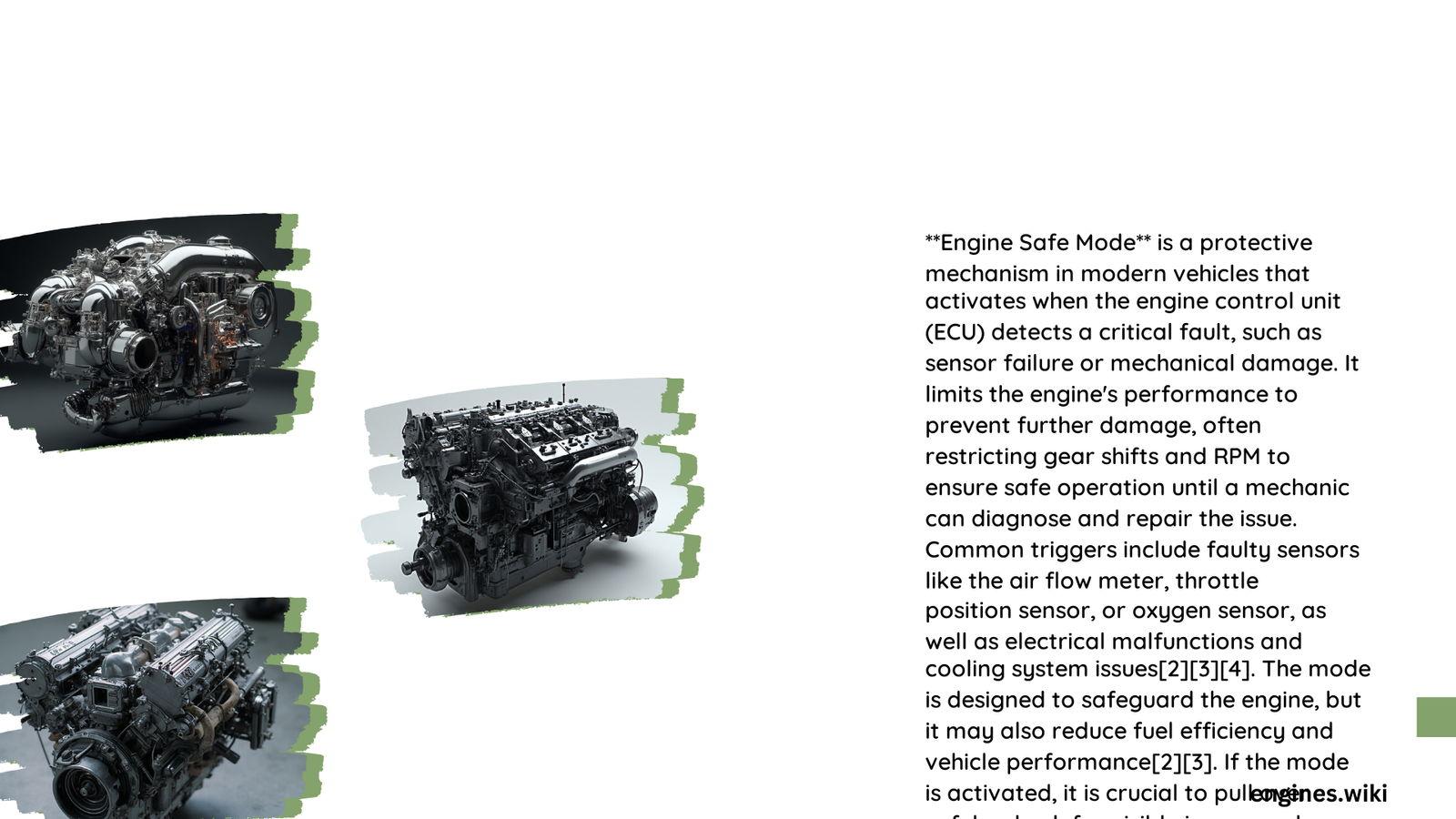Engine Safe Mode: Protecting Your Vehicle’s Critical Systems
Engine safe mode represents a critical protective mechanism in modern vehicles, automatically activating when the vehicle’s computer detects potential system-threatening issues. This intelligent failsafe strategy limits vehicle performance to prevent catastrophic mechanical damage, allowing drivers to safely navigate to repair facilities while minimizing long-term automotive system risks.
What Triggers Engine Safe Mode?
Engine safe mode activates under several critical conditions:
- Sensor Malfunctions
- Mass Airflow (MAF) sensor failure
- Throttle Position Sensor (TPS) issues
-
Transmission speed sensor problems
-
Mechanical Warning Signs
- Low transmission fluid levels
- Compromised electrical wiring
- Potential timing chain complications
How Does Engine Safe Mode Protect Your Vehicle?
When activated, the vehicle’s Engine Control Unit (ECU) implements strategic performance restrictions:
| Performance Limitation | Typical Range |
|---|---|
| Maximum Engine RPM | 2,500 – 4,000 RPM |
| Maximum Vehicle Speed | 55 – 75 km/h |
| Primary Objective | Prevent Further Mechanical Damage |
What Diagnostic Steps Should You Take?
Immediate Diagnostic Procedures
- Use OBD-II Scanner
- Connect diagnostic tool
- Read error codes
-
Identify specific system malfunction
-
Inspect Critical Systems
- Check transmission fluid levels
- Examine electrical connections
- Verify sensor functionality
What Are Potential Repair Costs?
Repair expenses vary significantly based on detected issues:
- Sensor Replacement: $100 – $500
- Transmission Component Repair: $1,000 – $5,000
- Comprehensive Diagnostic Assessment: $50 – $200
Why Professional Diagnosis Matters?
Professional mechanics can:
– Accurately interpret error codes
– Identify root cause of safe mode activation
– Recommend precise repair strategies
– Prevent potential long-term vehicle damage
Common Misconceptions About Engine Safe Mode
- Myth: Safe mode always indicates catastrophic failure
- Reality: Often a preventative measure to protect vehicle systems
Prevention Strategies
- Regular vehicle maintenance
- Timely sensor and fluid checks
- Immediate response to warning indicators
- Professional annual diagnostic assessments
Technical Insights
Engine safe mode represents a sophisticated automotive protection mechanism, leveraging advanced computer diagnostics to preemptively prevent mechanical failures. By restricting performance parameters, the system ensures minimal risk during potential system compromises.
Expert Recommendations
- Never ignore persistent safe mode activations
- Use certified diagnostic tools
- Consult professional mechanics for comprehensive assessments
- Maintain detailed vehicle maintenance records
Final Technical Perspective
Engine safe mode is not a weakness but a sophisticated safety feature demonstrating modern automotive engineering’s commitment to vehicle longevity and driver protection.
References:
- [Vehicle Safe-Mode Cyber Security Research Paper]
- [Automotive Diagnostic Procedures Manual]
- [ECU Protection Mechanisms Study]

